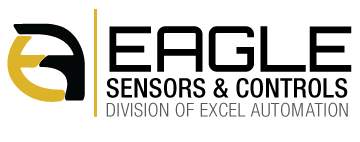Ultrasonic Sensing

Ultrasonic sensing, within the overall sensor market, is relatively new, or at least new to a lot of newer engineer and maintenance personnel. To that point, when being presented to a customer, there may be a need to educate the customer on its capabilities and trade-offs, and how to apply it effectively.
Ultrasonic sensors have the advantages of being able to operate in a dusty/dirty environment, well beyond the limit of a photoelectric. Ultrasonics essentially respond to all targets equally, independent of their color, if a return echo can be detected. Ultrasonics have an impressive sensing range, some up to 8 meters. Although their beam inherently spreads out with distance, their effective beam is more confined. Because of their broad beam, it is a good choice where the user does not want to respond to small variations in the surface of a target material.
One of the most important advantages of ultrasonics, is the ability to create not only a window of sensing in space, seeing only targets in that window, but even more importantly, to hold the near limit and far limit of that window quite precisely. Since this characteristic is independent of dust/dirt, or color of the object, it is an excellent choice for level sensing/monitoring, level control, roll diameter, and target presence applications where background suppression is essential.
Depending on the model selected, ultrasonic sensors are excellent for sensing the presence of all materials, but an advantage is that they will not see through the material. Thus, in the proximity mode or through beam mode, it is an excellent choice for sensing translucent or transparent materials. This includes plastic bottles, clear films, and glass. In the proximity mode, the sensors beam should be perpendicular to the surface of the target, whereas through-beam mode will be independent of incident angle to the target. An additional advantage of ultrasonics is that they can be used in what may be called simply “using a background”. The analogy is photoelectric sensors used in the retro-reflective mode. The target passes between sensor and the background. The decision is made not on whether the beam is reflected from the target, but whether the beam is returned from the background. This is a powerful way to apply the sensor, when appropriate. The background can be any object that returns the ultrasound, e.g., the floor, the wall, the machinery itself, etc.… Note that photoelectric sensors must use a standard photoelectric reflector.
Ultrasonic sensors are available in either discrete, analog, or a combination thereof these outputs. The analog models are available with either standard, 4-20 ma, or 0-10 v. The 4-20 ma analog output is often favored for its high electrical noise immunity, as well as its circuit break detection resulting in 0 current, instead of 4 mas. With a simple push of a button teach, the analog output is scaled within the near and far limits. Discrete models are available in proximity or through-beam modes, and analog models are proximity mode only.
Disadvantages of ultrasonics include the relatively slower response time, due to the sensor using media at the sound of speed. Fastest models may be approximately 2 ms.
Another factor to consider, is the dead-band of the selected model. All ultrasonics have a dead-band, which is a distance measured outward from the sensing face in which the sensor’s response and respective output may be un-predictable. This dead-band is due to the dampened ringing of the emitter transducer, before the receiver can listen for the respective return echo. However, with the relatively long-range capability of ultrasonics, the dead band may not be a significant issue, because the recourse may be to simply back the sensor further away from the target, where applications permit. The longer the stated max range of the sensor, the larger the dead-band. Some tradeoffs are made by manufacturers, so dead bands may vary from manufacturer to manufacturer, for any given sensing range model.
Ultrasonic sensors typically have operating temperature specs at either the low or high end which need to be considered with respect to industrial applications. Indoor applications usually only affect the high end of the temperature limit, so they cannot be used near open flames or ovens. Low temperature limits restrict use outdoors in some climates, as use in cold storage areas.
Strong air currents will disrupt the emitted ultrasound waves, so use near fans or vents should be evaluated and if possible, used with partitions, or avoided altogether.
